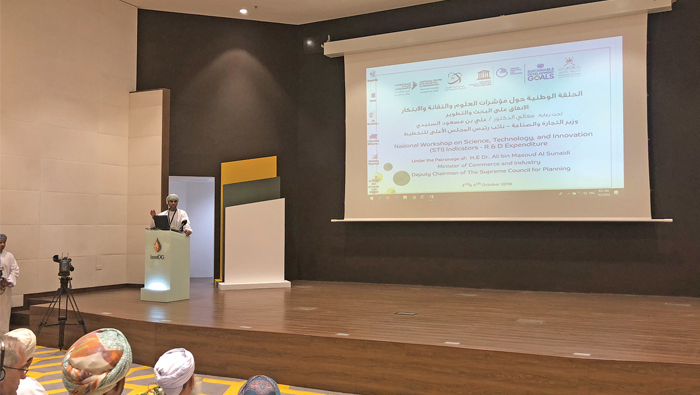
Muscat: Oman spent OMR63.6 million on science, technology, and innovation (STI) in 2017, but the national target is yet to be met.
Dr. Sharifa Al Harthi, Director of the National Innovation Strategy (NIS), said: “The total spending on Research and Development (R&D) in 2017 in Oman reached 63.6 million, equating to 0.22 per cent of the national income.”
Speaking to Times of Oman at the national workshop on STI indicators, Dr. Hilal Al Hinai, Secretary-General of The Research Council, said: “Innovation is now the strongest component in development, with many countries stressing on the need to focus on innovation, and as part of that innovation process is the expenditure on R&D.”
The national research strategy has set a target of 2.0 per cent of GDP to be spent on STI. “We have not moved significantly towards achieving that target, however, especially during the last few years, there has been a focus on developing partnerships between public and private institutes and helping the private sector focus on innovation, to help improve its activities and also to improve the performance of companies contributing to the national effort on innovation,” Al Hinai said. “Expenditure on R&D is one of the key indicators in each of the Global Innovation Index (GII) reports and the Global Competitiveness Report, which affects the Sultanate’s overall ranking on the GII, and consequently, the competitiveness,” Al Hinai added.
The national workshop on STI indicators began on Wednesday at the Institute of Oil and Gas.
The workshop aimed at identifying appropriate indicators that measure R&D and what is counted as R&D. It also stressed that the industrial sector and companies working in Oman must identify the R&D within their activities, focus on them and report them systemically.
The two-day STI workshop is being organised by The Research Council in collaboration with the Supreme Council for Planning, UNESCO Institute for Statistics, UNESCO Natural Science Sector, and the National Centre for Statistics and Information.